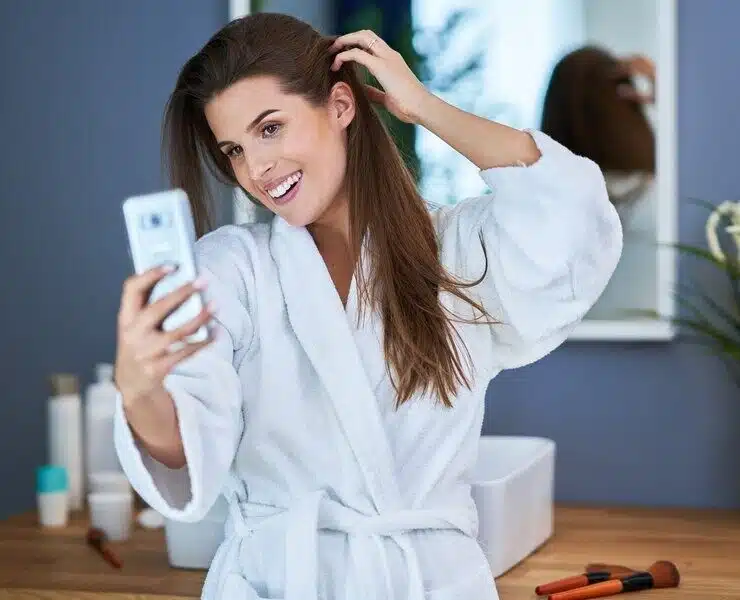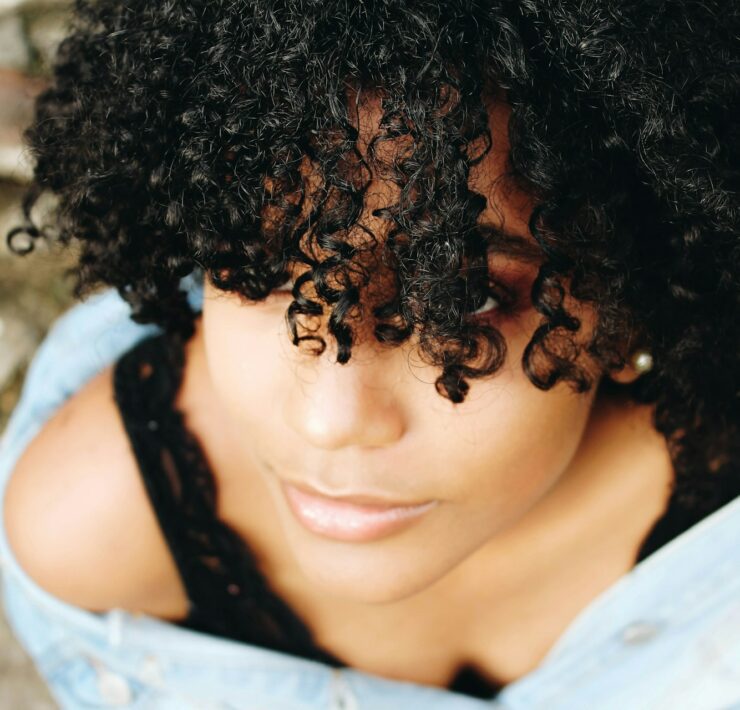
The Beauty of Type 3 Curly Hair
The beauty of type 3 curls lies in their versatility and unique texture. Type 3 curly hair ranges from a light curl to tight, curly tendrils and usually has a combination of textures. They are defined and springy, with more height than other curl types. Styling type 3 curls can be done in various ways depending on the desired look. This curl type can get weighed down with too much product that stretches out the curls. Ultimately, embracing the natural texture of type 3 curls is vital to loving them and showcasing their beauty.
Type 3 hair is a curly hair texture that ranges from light curls to tight, curly tendrils. It is characterized by a well-defined S-shape and springy curls with more height and volume at the root than type 2 hair.
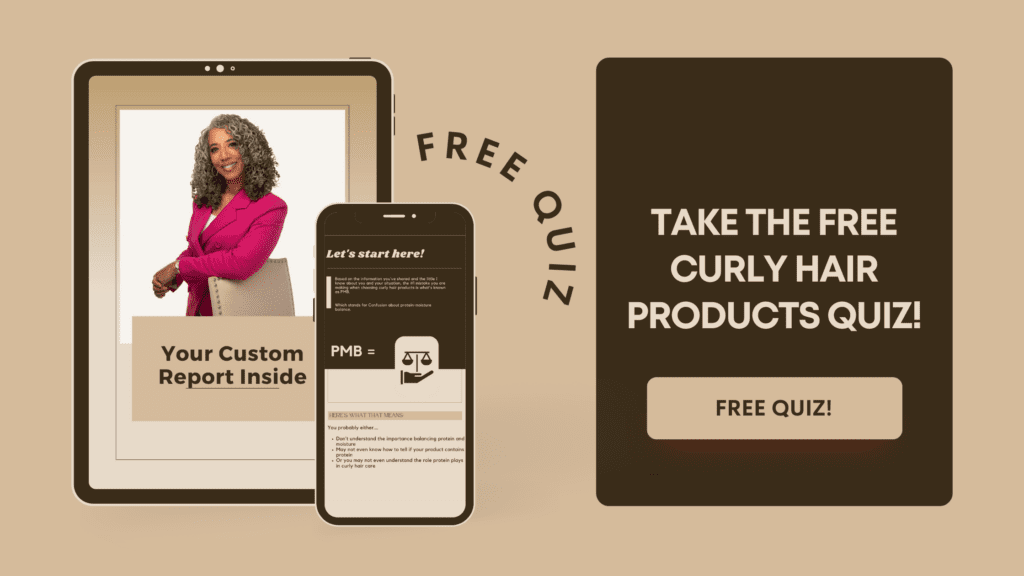
When caring for type 3 hair, using products that enhance and define natural curls is essential. Look for naturally derived ingredients to moisturize the hair. Use gentle shampoos or cleansing conditioners (a.k.a. co-washes) that clean and quench your curls without stripping them of their natural oils. To reduce damage when detangling type 3 hair, work a detangling comb from tip to root instead of root to tip.
So how do you get your type 3 hair to stay gorgeous and frizz-free? It all depends on your unique curl type.
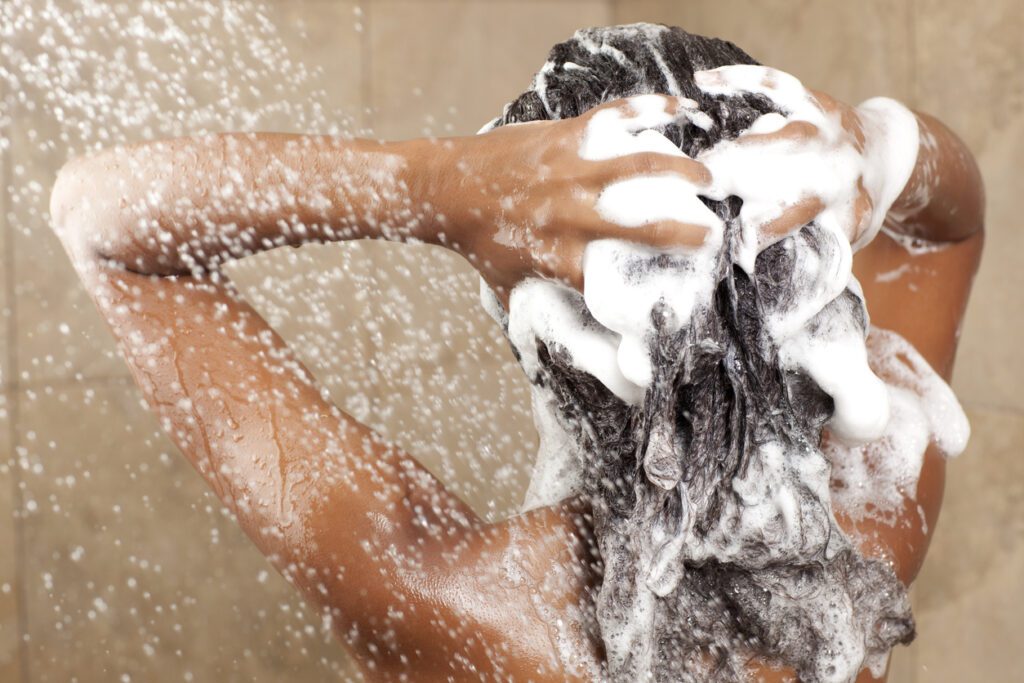
Understanding the Subtypes of Type 3 Hair
Type 3 hair has three subcategories: 3A, 3B, and 3C. Type 3A curls are large, loose curls similar in circumference to sidewalk chalk. Type 3B curls are tighter and denser than type 3A curls, taking on a ringlet shape with significant volume. Type 3C curls have the circumference of a pencil or chopstick and are densely packed, leading to effortless volume.
Type 3A Curls
The defining characteristics of 3A hair are well-defined and springy curls with a loopy, “S” shaped pattern. The circumference of 3A curls is typically the size of sidewalk chalk. 3A ringlets have a fine to medium texture and benefit from lots of body and movement but are prone to frizzing and dryness. Type 3A hair is the loosest of the general type 3 curl pattern and often looks like a soft curl.
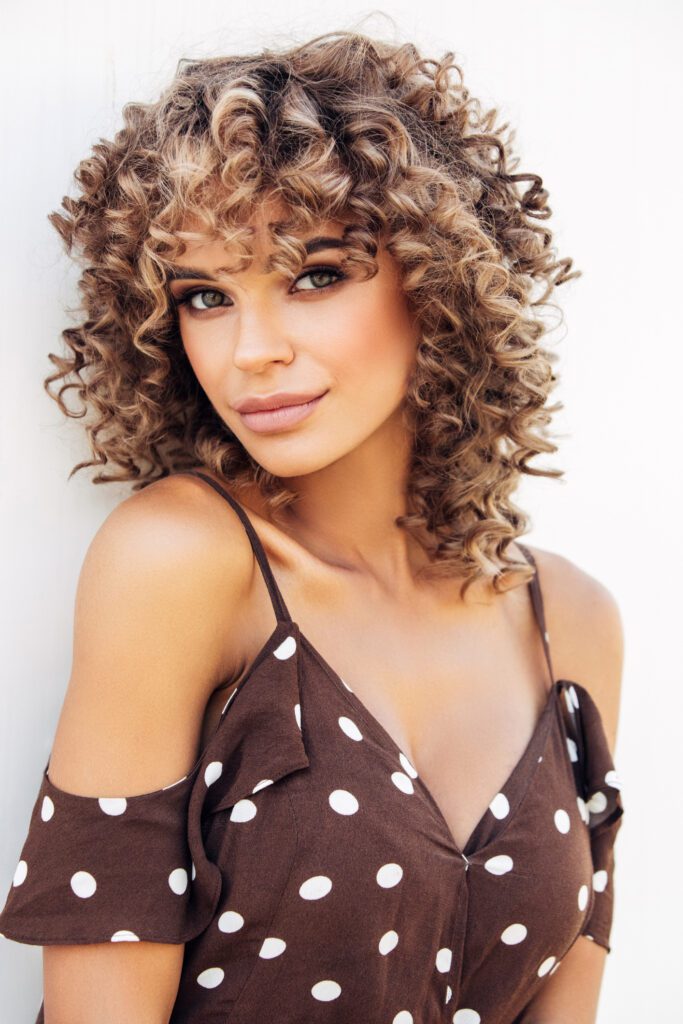
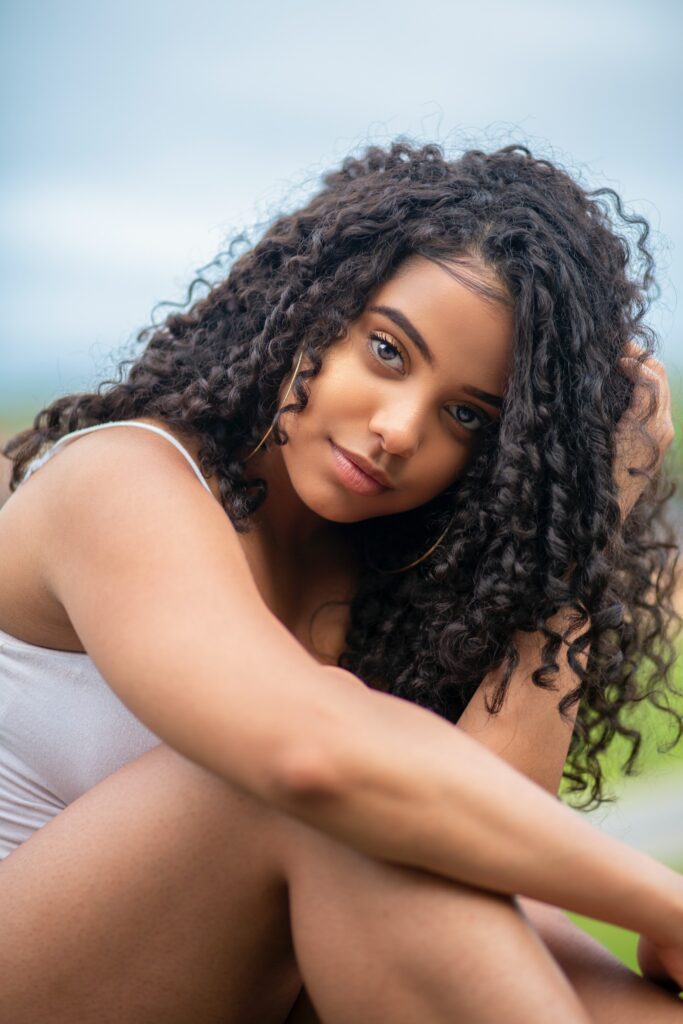
Type 3A tends to be naturally smooth and soft. To care for type 3A hair, some may follow the Curly Girl Method, which involves avoiding sulfates and prioritizing lightweight hydration. It is also essential to find the best wash technique to master second-day curls. Regular finger combing and oiling the hair at least once a week can help maintain its health. Using products that help repair damage and deep conditioning every other week is also beneficial for type 3A hair. Additionally, shampooing only two to three times per week is recommended to allow curls to benefit from natural oils from the scalp.
Recommended products for 3A hair include sulfate-free shampoos, cleansing conditioners (cowashes), daily conditioners, leave-in conditioners, deep conditioners, oils, mousses, and styling gels.

Type 3A hair is prone to frizz, so it’s essential to be gentle when drying it. Use a microfiber towel or soft cotton t-shirt with a smooth texture to pat the hair dry instead of rubbing it with a regular towel. To avoid product buildup, shampoo your hair once or twice weekly, and don’t skip conditioning. Use lightweight, hydrating products that contain humectants and emollients.
Maintaining hydration is essential for type 3A hair. Use a leave-in conditioner on wet hair to keep curls hydrated and frizz-free. Apply the conditioner from roots to ends and work through with your fingers for even saturation. You can then dry it naturally or with a diffuser. If you need root volume, apply volumizing foam at the roots before drying/diffusing.

Avoid washing your hair every day to prevent it from getting too dry. Wash 3A hair every 3 to 4 days to keep your roots and hair clean and hydrated. Scrunching is your friend when styling type 3A curls – put some product in your hands, flip your head, and start grabbing sections of curls from the bottom up. Scrunch each section toward the scalp until you’ve scrunched all your curls.
Type 3B Curls
Type 3B curls are well-defined, spiral curls that range from bouncy ringlets to tight corkscrews. The circumference of each curl is roughly that of a Sharpie or the size of a thick marker. 3B curls have a fine to medium texture and benefit from lots of body and movement but are prone to frizzing and dryness. They are characterized as tight and springy with clearly defined spirals. The “S”-shaped curls are usually about the circumference of an index finger or more prominent, making them big, bouncy, and voluminous.

To style 3B curls, we recommended properly hydrating the hair and air-dry it if low density. For high-density hair, a combination of air drying and diffusing (or using a hooded dryer) is ideal for preventing the hair from staying wet for too long, which can damage the hair. The plopping method can be used to style hair post-shower, and high-heat styling should be minimized to avoid worsening frizz and damaging the hair.
Between wash days, a loose ponytail puffed up top can keep frizz at bay and hair away from the face. Use a curl-friendly clamp or silk scrunchy for your ponytail. To define curls, we suggest wetting the curls and scrunching upward with a curl-defining cream, followed by smoothing on a nourishing hair oil to seal the cuticle. Unless the hair is thick and dense, avoiding heavy products that weigh down the curls and using a hair styling cream without glycerin to reduce frizz is essential.
To further reduce frizz in 3B curls, we recommended using extra moisture to protect against dryness and frizz. Coating the curls in a hydrating conditioner or nourishing hair oil before shampooing and letting it sit for up to 30 minutes can help. Shampooing just once or twice a week can also help maintain moisture levels. Using a weekly hair mask is also beneficial for reducing frizz in 3B curls. Leave-on hydration, such as leave-in conditioners, serums, and hair mists, is crucial in defending the hair against post-shower frizz. Finishing with a hair styling cream or gel to reduce frizz is also vital. Additionally, using a soft cotton t-shirt or microfiber towel instead of a cotton one when plopping or micro-plopping can help minimize frizz and breakage when drying the hair.
The best way to dry type 3B curls is to air dry them instead of using blow dryers or other heat tools, which can damage the hair. Thick or dense type 3B curls may also benefit from drying with a diffuser or a hooded dryer on low heat. We recommend using plenty of curl-defining creams or styling foam to create your desired look. Towel drying should be avoided as it can create friction and cause breakage. Instead, a cotton t-shirt or a microfiber towel with a smoother fiber can dry the hair gently. Building and retaining moisture by layering products and focusing on suitable products and protective care is crucial to maintaining 3B curls.

Type 3C Curls
Type 3C curls are delicate to medium in texture and are prone to damage, breakage, and frizz. It is essential to use products that balance moisture with volume when caring for 3C hair. Some recommended care tips for type 3C hair include washing and conditioning thoroughly, deep-conditioning the hair once a week, using a curl cream or leave-in conditioner, applying a curl refresher, and handling the curls gently. It is also recommended to cleanse the hair properly and embrace heatless styling techniques. Using a deep conditioner once a week can help keep moisture levels in the hair balanced and give strands a reset. Semi-protective styles such as top knots, buns, pineapple, and hair claws are also perfect for 3C curls.
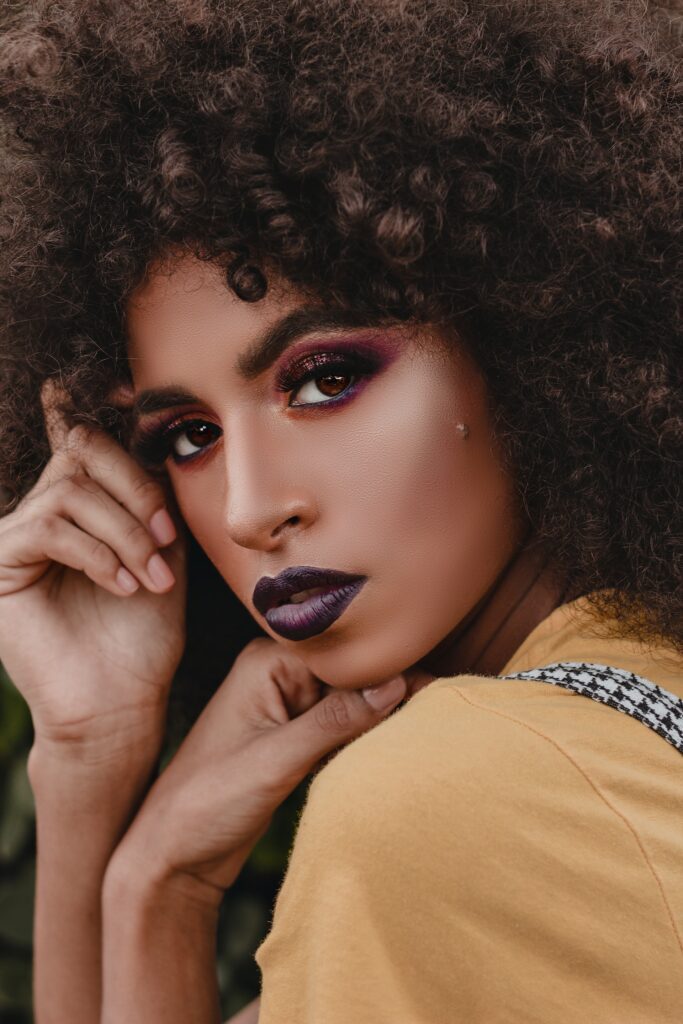
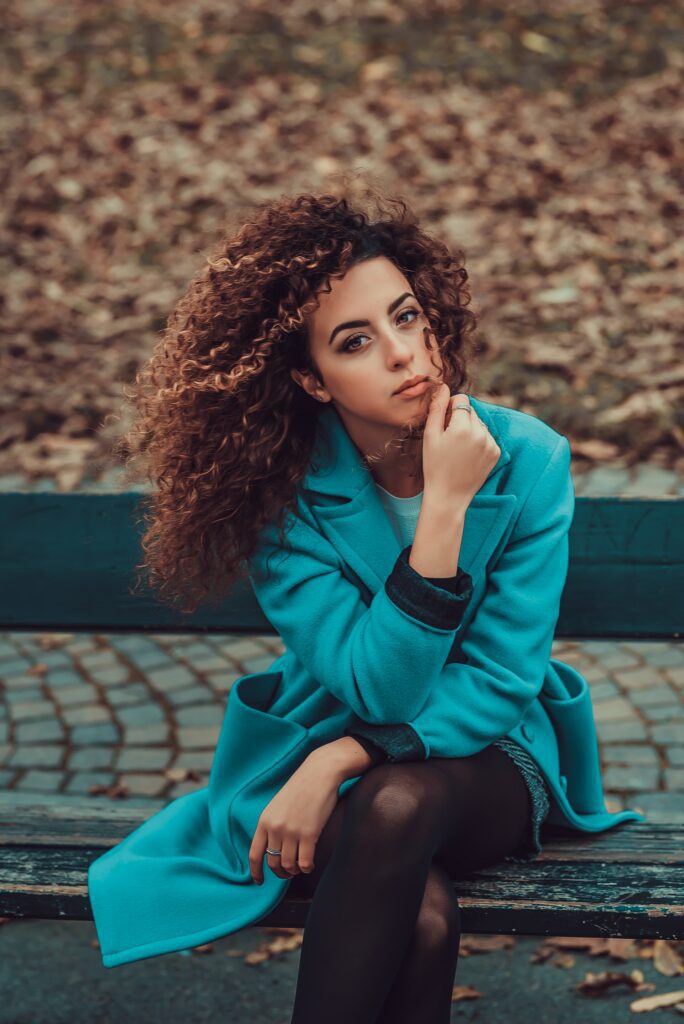
Type 3C curls are dense and have the width of a pencil, with corkscrew-like ringlets blended into their hair pattern. They are considered the tightest of true curly hair types and tend to have the most volume compared to other curl types. Type 3A curls are loosely curly with S-shaped curls that may lack volume and appear flat, and type 3B curls have more tightly curled S-pattern curls. All type 3 hair will have an S-shaped wave, but 3C is the tightest curl within the type 3 category.
Some common misconceptions about 3C curls include that they are easier to manage than straight hair, which is true and false, depending on the individual. Another misconception is that coily hair, including type 3C hair, does not grow as fast as other textures, but this is untrue. It grows at the same rate as different textures but may break more easily if not treated correctly or if the hair strands are fine. Additionally, there may be a misconception that all curly hair types are the same or can be treated the same way, but every curl type has unique characteristics and requires specific care.
To care for type 3C curls, we recommend washing and conditioning the hair thoroughly, deep conditioning the hair, choosing a curl cream, and applying a gel. Cleansing the hair is also essential to keep it healthy and moisturized. Co-washing can be tried instead of shampoos containing sulfates, which should be avoided at all costs. Finding the right combination of products that add moisture to the hair is also essential. Avoiding chemicals and using post-wash styling products can help maintain healthy 3C curls. Adding water to the hair is vital as type 3C curls are prone to dryness and frizz.
Choosing moisture-rich products for 3C curls that add moisture to the hair and define curls while reducing frizz is essential. Layering 3C hair products can also be beneficial for achieving the best results.
Spritzing the hair with water or aloe or a curl refresher or using moisturizing creams on the ends daily can help maintain moisture levels. Water (not oil) is considered the best form of moisture for 3C curls. A good hairstyle option for 3C curls is the wash-and-go approach, where curls can air dry naturally or with minimal heat.

General Tips for Maintaining Type 3 Hair
1. Use a conditioner every time you wash your hair and a deep conditioner as needed.
2. Apply a leave-in conditioner to hydrate your curls throughout the week.
3. Avoid using high heat on your hair, which can damage the curls.
4. Be gentle when brushing or combing your hair, especially when detangling it while wet.
Detangling
Detangling type 3 hair can be challenging, but there are several ways to make it easier. The first step is ensuring the hair is moisturized and has lots of slip by using a conditioner with plenty of slip or applying a pre-poo, such as coconut oil, the night before washing and detangling. It is also essential to detangle the hair while it’s wet, never dry.
To detangle type 3 hair, start by dividing the hair into small sections and working on one area at a time. Use a wide-tooth comb or a detangling brush to gently comb through the hair, starting from the ends and working your way up to the roots. Avoid using a paddle brush as it can cause breakage and knots. If you encounter any knots or tangles, use your fingers or a wide-tooth comb to gently separate them before continuing the combing process.
We recommend detangling type 3 hair on wash days, whether once a week or every three to four days. For best results, detangle while slippery with conditioner and water, which will help minimize breakage and make the detangling process more manageable. The hair is properly conditioned when it feels slippery like seaweed.
Drying
Type 3 hair is curly hair that ranges from loose curls to tight corkscrews. To dry type 3 hair, we recommend using a microfiber towel, a smooth soft cotton t-shirt, or a cotton flour sack towel, instead of a regular towel to avoid breakage and frizz. After washing the hair, it is essential to replace moisture by following shampoo with conditioner and deep conditioning regularly. It is also recommended to detangle the hair during wash day.
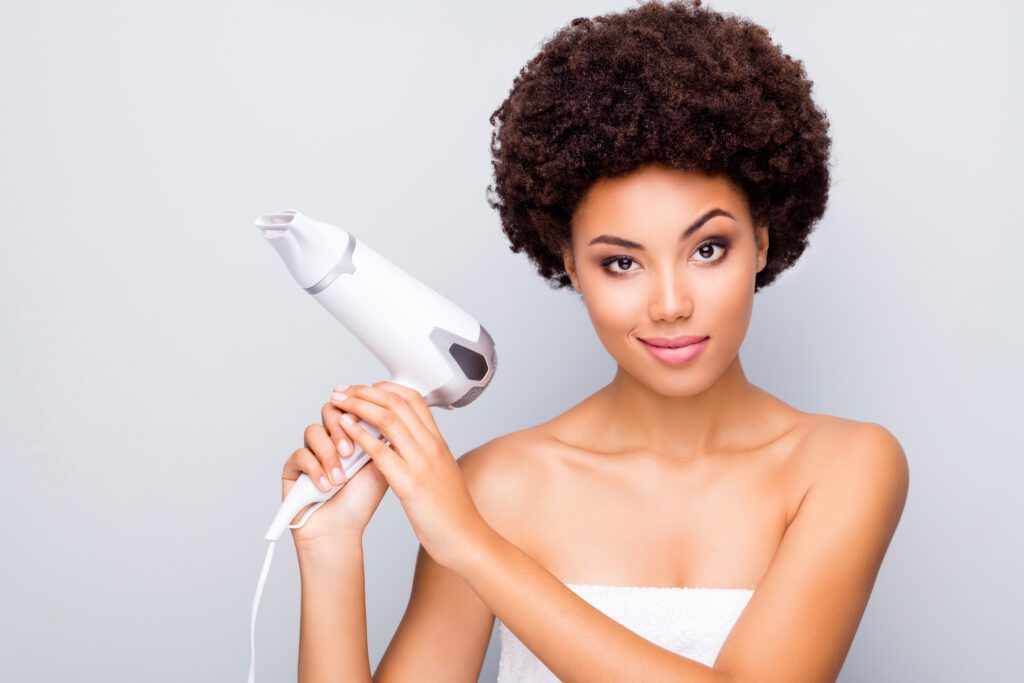
Type 3B hair has medium-sized curls that range from bouncy ringlets to springy corkscrews and tends to be coarser than type 3A. We recommend shampooing once a week with a moisturizing shampoo and conditioner. Detangling with fingers and regular deep conditioning is essential in treating type 3B hair, finding the right products for your hair, and balancing cleansing with oils and moisture.
When drying type 3 hair, air drying or carefully wrapping the hair with a towel without rubbing is always a better option than using heat styling tools that can cause damage. Lightweight oils, gels, and other stylers are best for type 3A curls while avoiding heavy oils such as olive and coconut. For type 3C curls, moisturizing leave-in conditioners containing ingredients such as avocado oil, rice oil, and aloe vera are recommended.
Styling
Type 3 hair, also known as curly hair, ranges from loose, loopy curls to tight, springy corkscrews. Styling type 3 hair while still wet is recommended. Strong-hold styling products such as leave-in conditioners and gels can help reduce frizz and define curls. Twirling small sections of curls around your finger can encourage definition.
Check out this video from Chellis Curls for finger coiling for frizz free and defined curls!
For type 3A hair, using a simple lightweight leave-in conditioner for hydrating, smoothing, and improving damaged-looking hair is recommended. For type 3B hair, a water-based hair serum that coats the surface of the curls when styling can help define them. Avoiding harsh brushes and tight hairstyles like tight ponytails, braids, and buns that pull at the roots is recommended for styling type 3A hair.
It’s important to note that the hair typing system could be better – naturally curly hair often has more than one type of pattern. In other words, someone with type 3B curls could have different curl patterns such as 2C, 3A, 3B, or even 3C. Therefore, understanding your unique curl type is crucial to finding the right products and habits for managing your curls. When adequately hydrated, type 3 curls look amazing air-dried. Using the plopping method to style hair post-shower can help minimize heat damage.
Processing
To safely color type 3 curls, use semi-permanent hair dye or temporary color as they are ammonia-free and have more gentle ingredients. Refraining from washing your hair 2-3 days before dyeing is also suggested, as natural oils protect the hair. Dirty hair is good hair when it comes to coloring! Use gel and liquid color formulas if you’re going it alone for better, fuller coverage. Foam formulas do not penetrate dense, curly hair as well as liquids and gels, which could make your color look “off” or uneven.
To get the best results when dyeing curly hair at home, apply the product to a few strands at the back of your hair first. Observe how long you must wait until you get the desired color. If you like how it ended up, continue dyeing the rest of your hair. However, if it’s not good, you’re lucky you only used it on a few strands you can hide.
It is also important to note that specific color treatments work best for certain curl types. Ombré and balayage work best on long, loose, wavy, classic curls. Regular trims are recommended every 10-12 weeks since the ends are usually the lightest. Bleach can be used on curly hair if applied carefully and correctly, but permanent tint is safer for those who want lighter tones without damaging their curl pattern or texture.
.
.
.
Search our free stylist/salon database with over 1250 curly hair stylists all over the US and other countries!
Love Your Type 3 Hair
Type 3 curls are curly hair that ranges from loose ringlets to tight corkscrew-like curls. Type 3 curls need moisture. Lightweight oils like jojoba and argan oil are best for type 3A curls, while heavier creams typically work well for type 3C curls. Deep conditioning once a week can help keep moisture levels balanced and reset the hair. Protective styling techniques like two strand twists, wash and go, or braided top knots can also help maintain healthy type 3 curls.
Identifying your unique curl type within the type 3 category is essential to find the right products and habits for managing your hair. Type 3B curls are tighter and thicker than 3A curls, taking on a ringlet shape with significant volume. Type 3B curls can be high maintenance but are better worked with than against. It’s best to ditch potentially damaging habits like high heat styling and harsh chemicals in favor of natural ingredients that enhance and define natural curls.
To keep your type 3 hair looking its best, cleanse with a sulfate-free shampoo, condition regularly, deep condition weekly, use lightweight oils or heavier creams depending on your curl pattern, incorporate protective styling techniques, avoid high heat styling and harsh chemicals, and use natural ingredients that enhance natural curls.
Common Mistakes to Avoid
Styling type 3 hair can be challenging, but these common mistakes can be avoided to keep the curls smooth, shiny, and intact.
- One of the most common mistakes with type 3 hair is over-cleansing by washing too often. It is recommended that curly hair types keep shampooing to a minimum as sulfates strip and dehydrate the strands, causing them to become brittle and frizzy. Another mistake is skipping conditioner, which helps moisturize and detangle the curls and resets the pH.
2. Waiting too long to apply styling products is another mistake to avoid. Styling products while the hair is still damp helps define the curls and prevent frizz. Blow-drying your hair without a diffuser can also cause frizz and breakage.
3. Using sulfated shampoos, brushing your hair, not using a leave-in conditioner, and not applying styling products at the right time are other common mistakes when styling type 3 hair. Styling with high heat tools can also permanently damage your natural curl pattern.
To avoid damage to type 3 hair, clarify regularly and use conditioners, and styling products specifically designed for curly hair. It is also important to gently detangle your hair with a wide-tooth comb or your fingers while it is still wet with conditioner. Applying styling products on damp hair will help define your curls without causing frizz.
Finally, protecting your curls while you sleep using a silk or satin pillowcase or wrapping your head in a silk scarf will help maintain their shape overnight.
Check out our Ultimate Guides for the best in hair products. To quickly and easily purchase hair products and accessories check out CurlPlanet. You can also download the free App.



